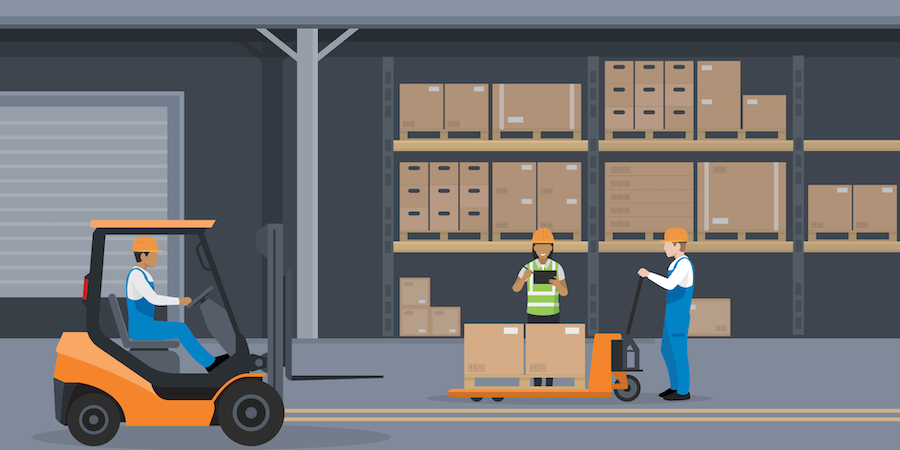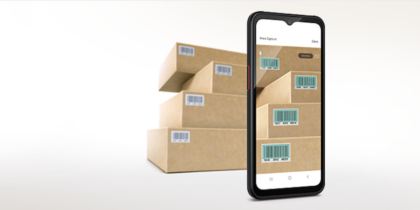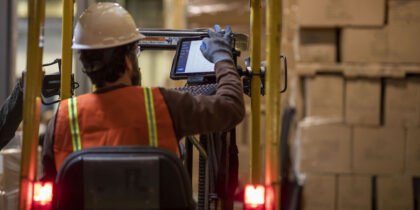While supply chain issues take the blame for product shortages and rising prices across diverse markets, three underlying issues hold the key to bringing overall supply and demand back into balance.
The supply chain is all about transportation and logistics — getting materials and products from the source, to the next stage of production and so on, until they reach the customer. And now that production is ramping up to meet demand, logistics is often the most compelling problem. These are three key issues to monitor in 2022:
Issue 1: The workforce/talent shortage
Media outlets have highlighted the backups at major ports, as cargo ships crowd the entrances to harbors and rows upon rows of containers line up in the storage yards. Demand is at an all-time high, so the shipping volume is up. But the real bottleneck is a shortage of truck drivers and dock workers to offload the containers, put them onto trucks and rail cars and deliver them to factories, warehouses and retailers.
Many people who were furloughed during the early pandemic shutdowns have retired, changed fields or decided not to re-enter the workforce for a variety of other reasons. Now as the economy recovers, companies have been unable to restaff adequately to meet high consumer demand.
It’s no surprise, then, that savvy companies are using digital technology to bridge the gap and help their existing teams work more efficiently. Digital solutions can ease the administrative burden that all workers face. You can automate the scheduling, dispatching and reporting of workers and equipment, and use intelligent routing to maximize your resources so that your team’s time and effort are applied effectively exactly where and when it’s needed. This kind of technology is called workflow management. Digital workflows use advanced logic — optimization, machine learning and AI — to continually update your team’s plans in real-time as conditions change. When they’re successfully implemented, digital workflows and automated processes allow smaller teams to focus on the most important tasks at hand, and not get bogged down in paperwork and unproductive chores that impede their effectiveness.
So what does a technology solution that cost-effectively delivers results to the trucking company, while simultaneously enabling drivers to efficiently do their jobs, look like? It starts with modernizing the entire hardware and software experience — starting with Samsung devices, providing a single, ruggedized tablet where drivers can intuitively record and manage their job tasks and activities through a familiar, unified interface.
Issue 2: More demand than supply
Today’s supply chain is challenged by unusually high demand; nobody expected consumer demand to recover so quickly and dramatically. Higher demand for goods increases the need for workers, but the supply of workers remains stagnant, according to the latest Job Opens and Labor Transfer Survey. Factories are restarting production as quickly as they can in the face of this shortage.
With a few notable exceptions, such as computer chips, it’s the realities of supply chain logistics that are at the center of the supply shortages. More goods are trying to move through the supply chain, while facilities and resources remain bogged down in mid-pandemic lows. While transportation providers, ports, warehouses and supporting service providers are restaffing as quickly as they can, they’re unlikely to meet demand anytime soon, so the backlog continues to grow.
The definitive guide to warehouse efficiency
Get your free guide to increasing warehouse efficiencies and cutting costs with mobile processes. Download Now
The quickest solution, which also happens to be the best long-term solution, is to increase the pace of automation with self-driving trucks, automated warehouses and goods-handling systems and workflow automation — achieving more throughput with existing resources. The “last mile” of a digital workflow is putting mobile devices in the hands of frontline employees. Even the best scheduling and dispatching system is only effective when workers are tied into the latest plan and direction. Mobile devices are also a critical part of the automated tracking and simplified reporting that keep the workflow system and its recommendations up to date for real-time, close-loop operations.
Issue 3: No time to waste
Disruptions in the supply chain won’t lead to reduced demand. In fact, availability issues often increase demand, as consumers make larger purchases to stockpile items rather than be caught short later. The supply-demand imbalance probably won’t fix itself anytime soon. Companies up and down the supply chain must address staffing, efficiency and throughput issues as soon as possible, with effective short-term solutions that can deliver long-term benefits.
Hiring will continue to be a problem for some time, so increasing automation and overall efficiency must be the focus. Fortunately, the newly enacted infrastructure bill will provide considerable investments in reducing congestion at the ports and making improvements to infrastructure such as roads and bridges to allow for smoother movement of goods from supplier to customer or retailer.
Getting more value from each employee is paramount as well. Again, technology can help enable this. Samsung tablets are highly rated by fleet drivers. Why such a positive response? Samsung tablets are among the most intuitive, secure, rugged devices offered today, designed to enable mobile workers just like long-haul drivers.
Because drivers are able to quickly and easily operate and gain value from Samsung Connected Fleet Solutions, trucking companies can forego off-putting, arcane training programs and their associated costs.
Of course, companies must still maintain their efforts to recruit new team members, and competition will remain strong as the supply of available labor remains steady. These new workers should have little fear of being laid off due to increased automation. Current demand may be high compared to 2020, but the market is just returning to pre-pandemic levels. When the disruption is finally behind us, the economy as a whole should return to its historic growth rate — and increased automation will help the newly restored workforce address that growth sustainably.
Find more ways you can increase warehouse efficiencies and cut costs with mobile processes in our free guide. And explore how Samsung’s full range of versatile transportation solutions can improve efficiency and empower your workforce.








